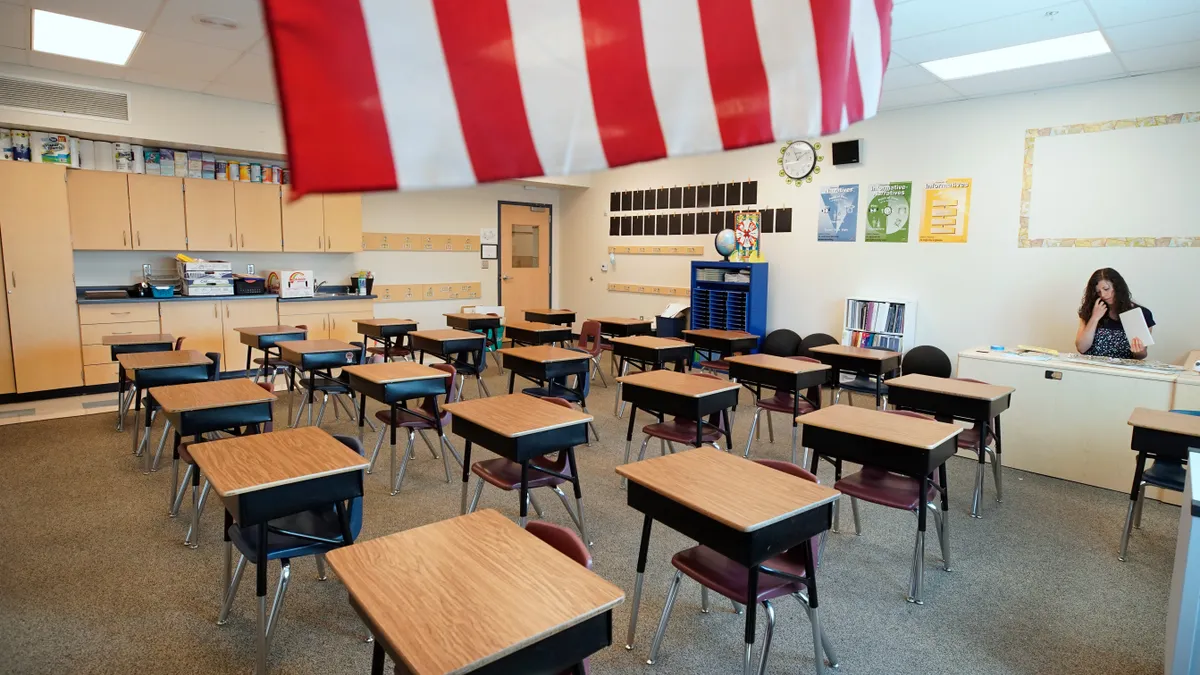Dive Brief:
-
Student attendance was worse this school year for students of color, those learning remotely and those living in low-income communities, according to an analysis of Connecticut school attendance data by the Connecticut State Department of Education and Attendance Works.
-
The state’s attendance data was uniquely situated for examination because at the onset of the pandemic in 2020, its education department took steps to collect consistent and reliable data — practices that allowed for the planning of education recovery efforts and school attendance initiatives for this summer and next school year, the analysis said.
-
Tracking and analyzing attendance data by student subgroups and learning formats can serve as an early warning sign that certain students and families need more support, or that schools and districts should add initiatives for positive learning conditions, the analysis recommends.
Dive Insight:
The collection of reliable attendance data during the pandemic was challenging because of the mix between in-person, remote and hybrid learning. It was particularly difficult to collect attendance data for remote learners, the analysis said. Only 27% of districts took attendance in spring 2020 when school buildings closed and classroom instruction shifted to online, according to a paper from the Center on Reinventing Public Education.
Another analysis published by FutureEd in May based on an examination of five school districts with a total of 450,000 students showed student absenteeism was worse during the pandemic than previously reported, particularly among young children, those living in poverty, English learners and students with disabilities.
In Connecticut, the state education department took several steps to collect and report attendance data, including keeping a consistent definition of attendance, which is individual student participation for at least a half a day for each instructional day. The state also published specific guidance on how schools should address complex attendance situations, such as when a remote learner is located in another jurisdiction. Additionally, the state also publicly published monthly attendance reports that compared the current data to previous years.
Connecticut’s attendance data showed several trends for the 2020-21 school year:
-
Overall, chronic absenteeism rates declined between the fall and winter months. Chronic absence is defined by Attendance Works as missing 10% or more of school days for any reason.
-
The gap in chronic absenteeism rates between in-person and hybrid students was less pronounced for high school students compared to elementary or middle school students.
-
Chronic absenteeism rates were higher for students who were: receiving free or reduced-price lunch; Black or Hispanic; English learners; identified as having a disability; and male. Those gaps continued between fall and winter.
“In Connecticut, data drives our decision-making because it is crucial to inform how we most effectively address the root causes of chronic absenteeism and ensure positive student outcomes,” said Charlene Russell-Tucker, Connecticut’s acting commissioner of education, in a statement.
The analysis recommends districts consider adopting new attendance policies this summer so schools are prepared to begin next school year with those practices.
Also suggested is that attendance be taken daily for elementary students and by course period for secondary school students. Those records should be reported on a frequent basis, such as monthly, so there is the opportunity for local and state analysis before the end of the school year.
“Since states and districts can only address and act on what they can see, having data and results in hand for the current school year versus after the fact will be important in driving decision making,” said Hedy Chang, executive director of Attendance Works, in a statement.







 Dive Awards
Dive Awards






